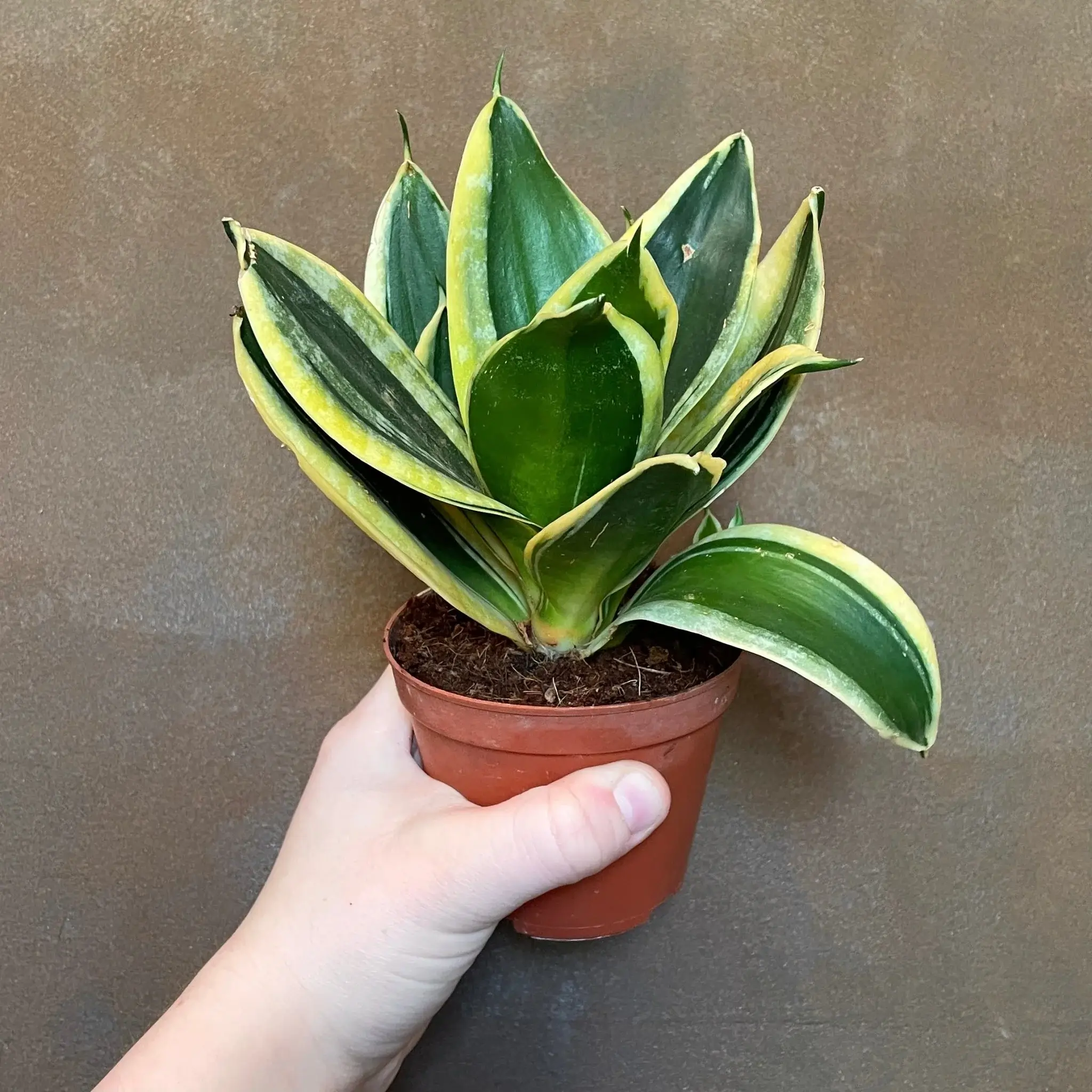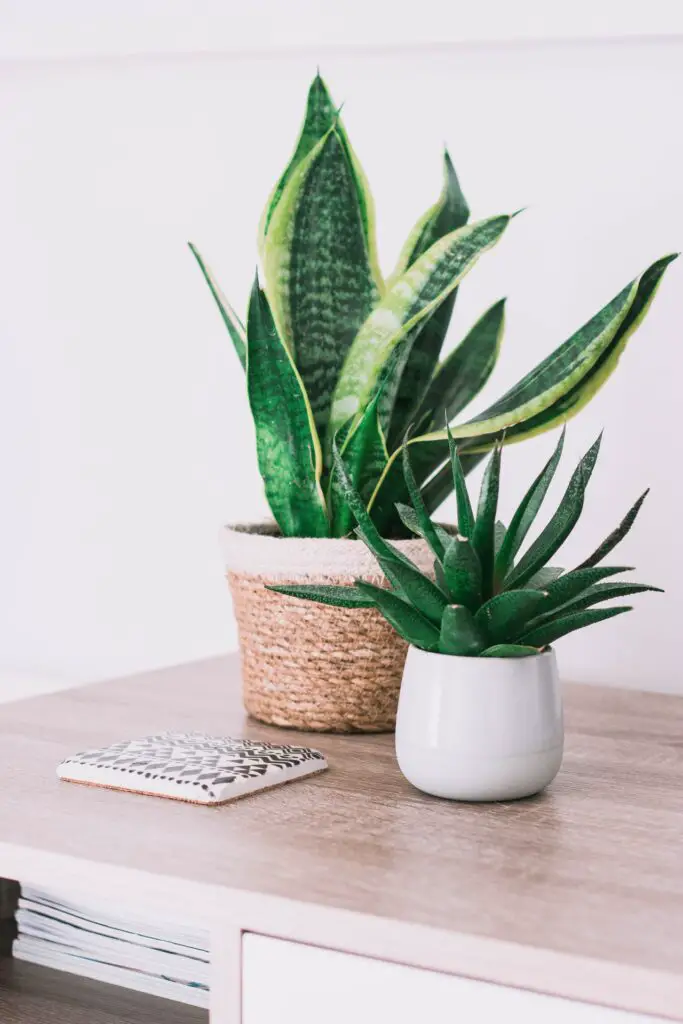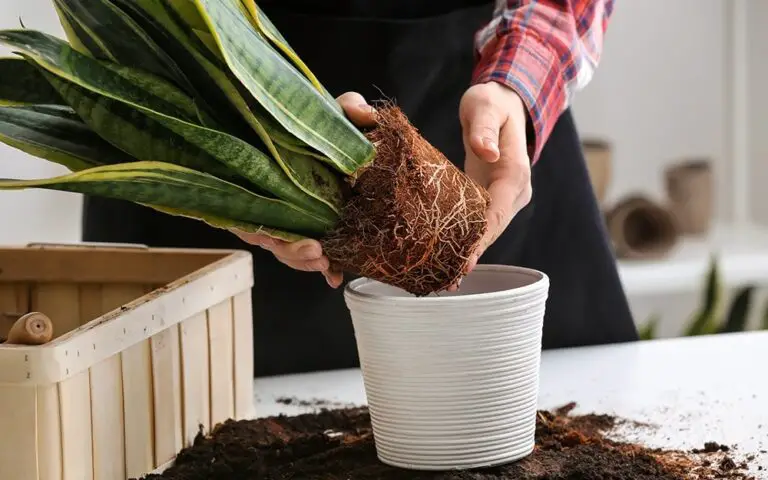Sansevieria Jade Pagoda

Also Known As
At A Glance
Features
Origin
The origin of this particular cultivar is unknown. However, the parent species (Sansevieria Trifasciata) is native to tropical Africa
Size
Being a compact hybrid, jade dwarf marginata only grows up to 8-10 inches (20-25 cm). Mature leaves are almost 2-3 inches wide in the middle. Flower stalks can grow up to 1.5 feet tall.
Foliage
S. Jade Pagoda has flat, thick, succulent leaves. The foliage has rich deep green color and a smooth texture. Leaves are arranged in a rosette form and each leaf has a broad lance shape. The leaf margins have bright yellow stripes with irregular thickness. The contrast between dark green and yellow color makes the plant stand out from other houseplants.
Flower
It is extremely rare for this plant to flower. It can produces vertical flower stalk covered in clusters of buds. The flowers are greenish creamy-white in color. The small, tubular flowers might be lightly fragrant.
Toxicity
Like all Sansevieria, it is mildly toxic for humans as well as pets. Chewing the plant can make the tongue and throat swell. If ingested in large amounts, it can cause gastrointestinal problems like vomiting, diarrhea, drooling etc. Keep it away from your cats, dogs and children.
Growth Season
Warmer climate promotes the growth in snake plants. This evergreen plant actively grows during the spring and summer seasons. Flowering usually happens in the winter or spring time.
Pests
This plant is generally not susceptible to pests and diseases. But, there is a possibility of infestation by mealybugs or spider mites. These insects are easy to get rid of, when encountered early. Overwatering is a major problem that causes root rot, fungus, and further invites more diseases. Be careful not to douse the rosette in water.
Propagation
There are various ways to propagate this plant- by root division, leaf cuttings or rhizomes. Dividing the root ball is a quick and reliable method. If you have a smaller plant, using healthy leaf sections may be more practical. When using leaf cuttings, take at least 3-4 inches long sections and plant them in soil, bottom side down. After a couple of months, the roots will form.
Growing Conditions
Water
This drought-tolerant plant doesn't need frequent watering to survive. You can water it every 1-2 weeks during the growing season, spring to summer. Reduce the watering frequency as temperature starts to drop. Water at most once a month during winters. Make sure that the top 1-1.5 inch soil is dry before you water the plants. Then water deeply and let it drain freely.
Light
This species can tolerate anything from the full sun to low light conditions. Ideal situation is bright and indirect sunlight. Keep your indoor plants in a well lit room, either using sunlight or with artificial lighting. Few hours of morning and evening sun is good. But, protect the plant from harsh afternoon sun.
Soil
Fast-draining soil is great for most Sansevieria plants. Use ingredients like perlite, coir, pumice, gravel to increase the drainage capacity of the soil. Never use a dense, sticky soil for your snake plants. Instead of making your own soil mix, you can also use a regular potting mix made for succulents and cacti.
Environment
S. Jade Pagoda plants do great in average room temperature and humidity. They are happy anywhere between 60-85°F (15-29°C). However, the plant is not winter hardy. It's better to avoid temperatures below 50°F (10°C), especially if the soil is wet. Frost can damage the leaves, and causes permanent scarring.


